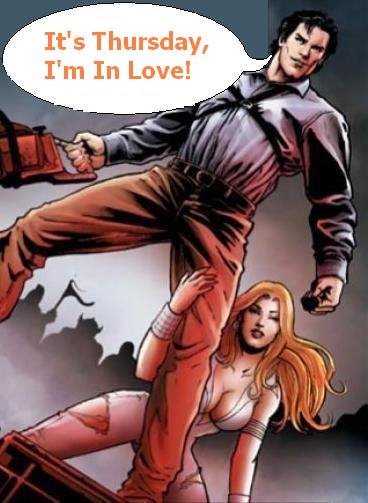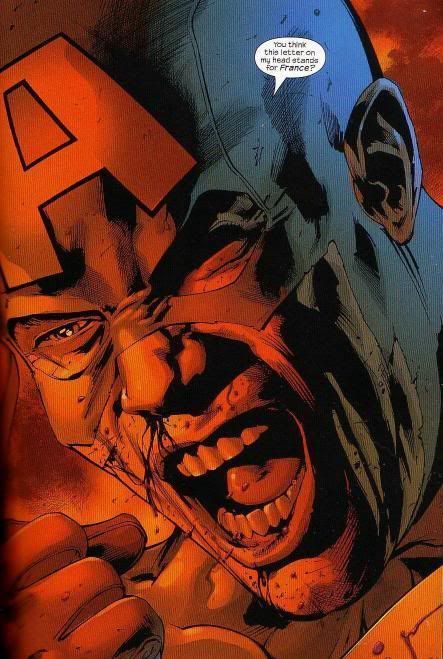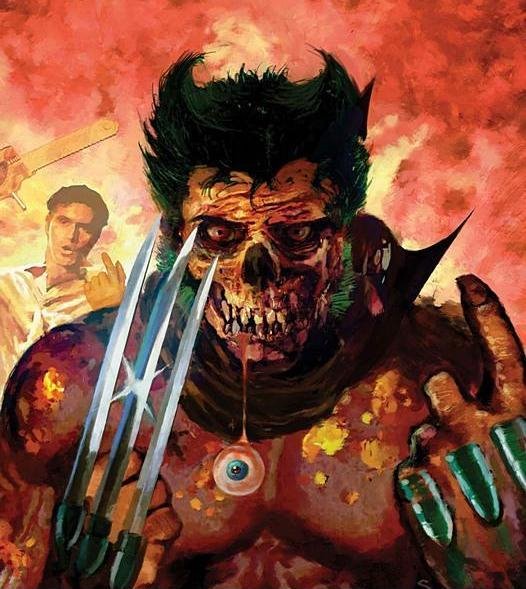Time for another review! And this time I’m going to be reviewing the first story arc of one of the most groundbreaking and popular arcs in recent X-Men history: the one that put the team of Grant Morrison and Frank Quitely on the radars of mainstream comic book fans, the one the revitalised the X-Men after years of stagnation, the E is for Extinction storyarc in the pages of New X-Men #114-116.
The X-Men comic books had been going nowhere quickly for the last decade or so. The X-books were the best-selling comic books for years before that and had seen creators such as Chris Claremont, John Byrne, Marc Silvestri, Jim Lee, Whilce Portacio, Andy Kubert and Joe Madureira cement their fame on the various X-titles.
However, the X-Men were victims of their own popularity, with seemingly spin-off title after spin-off title flooding the market only to succumb to cancellation after low sales numbers. While there were the two main X-books in Uncanny X-Men and X-Men, there were also a bevy of titles, some of which were a modicum more popular than the others: X-Force, X-Factor, Excalibur, X-Treme X-Men, X-Men Unlimited, Generation X, not to mention the many one-shots and mini-series of the X-characters.
The last big storyline that was successful in the X-Universe was the much loved “Age of Apocalypse”. The “Onslaught” storyline, for all the hype, fell short and was the last big X-story before 2006’s House of M put Marvel’s merry mutants on the map again.
But before House of M, two Scotsman named Morrison and Quitely revitalised the X-Men, bringing with them pathos, dark humour, adult-oriented themes and sweeping changes to the status quo. It was time for the X-books to step to the top of the sales charts again. The X-relaunch was so huge that they even changed X-Men to New X-Men.
Morrison and Quitely’s first arc, “E is for Extinction”, set the tone for what was to come in their 41-issue run.
They introduced a new uber-powerful villain, Cassandra Nova. She was as evil as evil gets and was the polar opposite of Magneto in terms of ideology. While Magneto wanted mutants to rule the world, Cassandra Nova wanted to kill all mutants!

She was evil and Quitely’s art made look extremely creepy. Sticking her fingers through one’s neck and having her fingers poke out through the orifices in one’s face…ouch! And why did she look so much like a female version of Charles Xavier? But more on that in another review…or you can always read the many TPBs and HCs that reprinted the legendary Morrison and Quitely run to find out for yourself.
Cassandra Nova didn’t just talk the talk, she walked the walk too. Her threats to kill mutantkind weren’t just idle threats. First she assimilates Donald Trask, heir to the Trask legacy of building the mutant-hunting Sentinels, then gets the Mastermold to build millions of sentinels to wipe out the mutant inhabitants of Genosha. Just look at how quickly the numbers fall in the mass-genocide from the panels below!

New, terrifying villain? Check. One ingredient of a successful run fulfilled. But Morrison doesn’t stop there. Oh no. He also radically changes everyone’s favourite X-Men by introducing a femme fatale to the team, the uber sexy Emma Frost.

How does Quitely draw her like that? It’s absolutely gravity-defying! Does she use double-sided tape to hold up those pieces of cloth to her boobs and sides of her body? And what a case of camel toe!

And once again, invisible gum-tape must be Emma Frost’s best friend. Emma Frost became one of the most popular X-Men as a result of Morrison and Quitely’s run. Yes, they gave her a British accent, which was completely unnecessary, but not did she know she was beautiful and her beauty to her advantage, she was also a A-grade 100% badass ultimate bitch.
In fact, she even ACKNOWLEDGES she’s a bitch in this little exchange with Jean Grey:

Another notion that Morrison introduces to the mutant-verse is that of secondary mutations. Mutants, which as a species, were far evolved from normal homo sapiens, could further evolve and develop new powers! As can be seen from the two panels above, Emma Frost, as drippingly sexy as she is, was obviously never a shiny-happy-people person. While she was still one of the world’s most powerful telepaths, Morrison gave her the secondary mutation (and power) of being able to harden her skin so that she became diamond-hard.
One of the more memorable (and perhaps controversial) secondary mutations was evolving Dr Henry McCoy from the ever-loving bouncing Beast to something you’d see out of a Disney cartoon…or horror movie, take your pick.

Beauty and the Beast? How apt. But no, really. It really WAS Beauty and the Beast.

Doesn’t Mrs McCoy’s bouncing baby boy look like he’s about to take Esmerelda out onto the ballroom floor, complete with clocks and candlesticks and dishes and cutlery all dancing and singing in tune?
Thankfully, despite Beast being subjected to a somewhat “hideous” cat-like transformation, he still retained his sense of humour.

In fact, one of the hallmarks of Morrison and Quitely’s run is the dark humour in the series, which was evident in the first storyarc. “Your dating days are over” indeed. Absolutely hilarious…it’d have been even more perfect if Beast had somehow quoted the bard, Shakespeare, with the classic line “Alas, poor Yorick” somewhere in the above panel.
And what happens when you ask a mutant who’s only power is to be hideously ugly if he was any good in a fight? You get the following panel:

But for all the humour in “E for Extinction”, we’re quickly reminded that the X-Men’s world has been given a healthy dose of adult-oriented reality and violence when Cassandra Nova “possesses” Charles Xavier. Charles surprises everyone by grabbing a gun he keeps close to him, pointing it to his temple and uttering:

Yeesh! Why does Charles even keep a gun there in the first place? He later explains that he knows he’s the most powerful telepath on the planet and needed to take precautions in case there were ever situations like what had happened, when his mind or body had been controlled by external sources.
Cassandra Nova almost wins the day though, when she infiltrates the X-mansion and wears the Cerebra (the telepathic-magnifying Cerebro’s more powerful sister) helmet and is about to snuff out all mutant life on the planet. In comes Emma to save the day in brutal fashion.

Omigod! An X-Men snapping someone’s neck in the comic books? What is this, R-Rated XXX-Men? Surely the X-Men’s boy scout, Scott Summers aka Cyclops, would NOT stand for this!

Well, uhm ok. If Scott’s ok with this. Must be another one of those Morrison-modifications. The old Scott Summers would never stand for this.
But that neck snap doesn’t kill Cassandra Nova! She still struggles on, despite having a couple of vertebrae snap into pieces. Just when the X-Men thought they had lost the day, in comes an unlikely “saviour”…

The gun that Charles used to earlier point at his own temple ends up being the gun that kills Cassandra Nova. So Scott Summers is okay with someone’s neck being snapped and now we’ve got Charles brandishing a gun and going all Punisher-like on an enemy mutant. Which brings me to my favourite panel and one-liner of the arc:

Hardcore indeed.
That would have been a fantastic end to the first story arc, but no, Morrison saves the best for last. He throws one more spanner into the works that brings down the axe on Xavier and his merry X-Men…Xavier, the world’s foremost expert in mutants and the champion for human-mutant relations, reveals why he has always been for the mutant cause:

And the house of cards all come crashing down.
Marvel’s merry mutants are back!



























